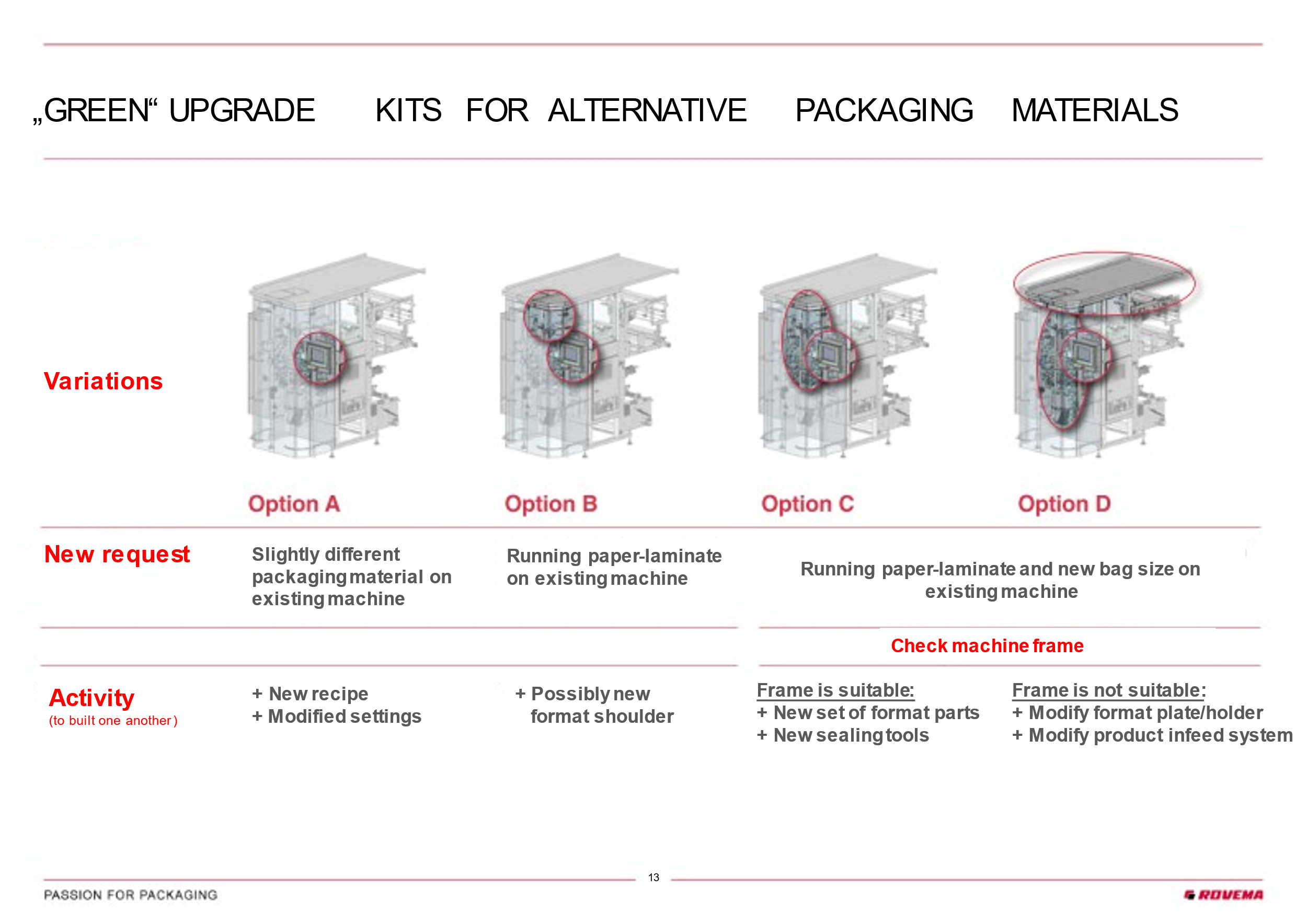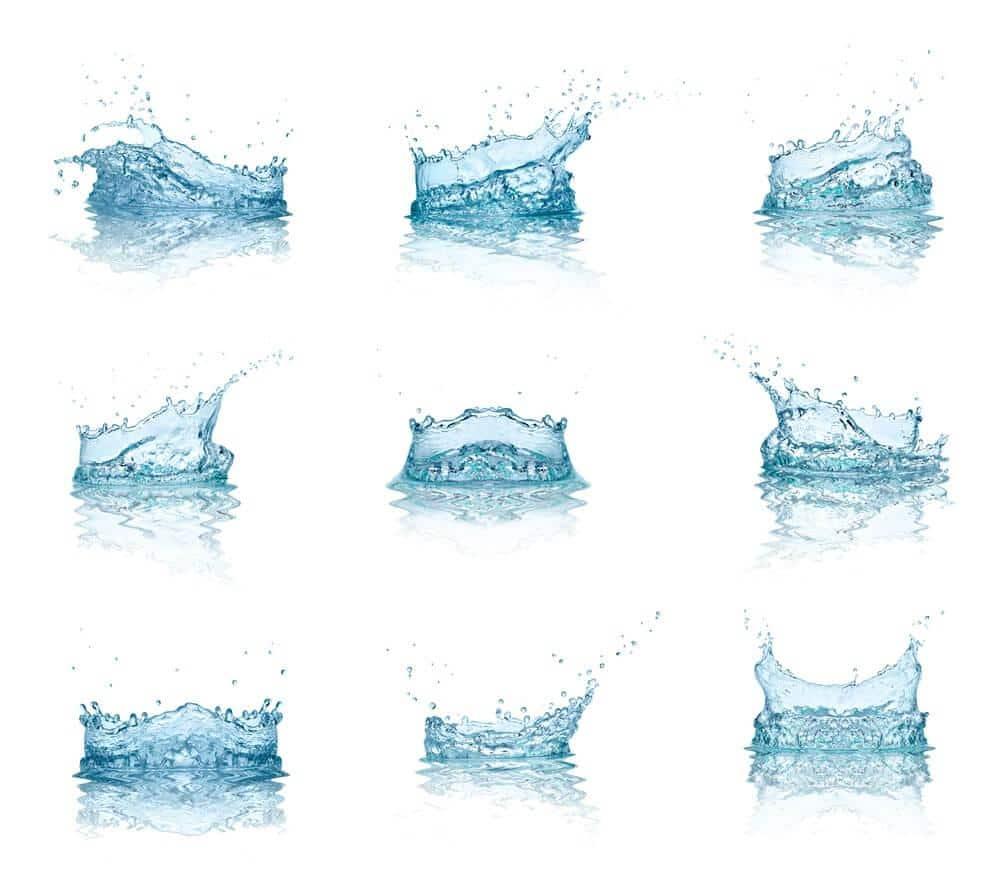Evaluating Existing VFFS Machines for Sustainable Films
Sustainable packaging materials are becoming increasingly popular, and many of today’s CPG brand teams and other stakeholders are evaluating ...
4 min read
 Christa Francis
:
Fri, Apr 14, 2017
Christa Francis
:
Fri, Apr 14, 2017

Picture this exasperating scenario. It’s midday and lunch rush is happening in the restaurant you manage. You go to refill the soup and notice there is some product in the seal. The bag isn’t leaking so you want to assume it will be okay, but who’s willing to play roulette with people’s health.
You decide to take the soup off the menu. Your busy rush crowd, some of which are loyal customers, are annoyed and they definitely let you know. So instead of your constant efforts to be one step ahead of the rush, you are behind and listening to a litany of complaints from patrons. This issue with the liquid package has cost sales, valuable time, and resources.
When the rush is over, you immediately call the distributor, give them a piece of your mind and let them know you will be expecting plenty more product immediately. You may also begin to start looking for other distributors. After all, this could have been damaging to your patron’s health, a PR nightmare, and may have even caused you to lose your job if the contaminated seal would have been overlooked.
No one wants to see this happen to their package, especially if it is liquid based. A scenario where the pouch is leaking can be expensive when it comes to damages and liability and it implies a lack of concern with quality and protection of the product
Since flexible packaging is the fastest growing segment in the liquid industry (expected to reach 370.75 billion by 2021) we want to make sure you are successful when it comes to liquid pillow bags. If your goal is to fill your bags with liquids at high speeds accurately and efficiently in nicely formed packages on a VFFS, make sure you review these three areas for successful liquid packaging.
KEYS TO SUCCESS
1) Film
The material that holds your product needs to be strong and durable. As discussed, a package that can be easily punctured or leaks can be a damaging to the brand, expensive, and inefficient in the long run. You want the film to be specific to liquid and to your product. For example, oil would have very different requirements than chicken noodle soup. While both could be packaged on a VFFS, the qualities of the product would require different structure in the film.
A crucial factor to consider is the coefficient of friction of the film material that must align perfectly with the machine to ensure a seamless creation of the pouch. If the COF (coefficient of friction) is either too high or too low on the VFFS, it can lead to operational issues, production inefficiencies, and inconsistencies in bag sizes and seal strength.
From a marketing standpoint, you want the package to provide graphics that are clear and promotional. The right film will enhance those graphics.
Interesting fact: Film is a space saver! It takes up less storage space than rigid containers. The pouch uses around 60% less plastic than plastic bottles. When comparing to metal cans, a case study performed by Liquiflex shows that 1 pallet of film was equal to 98 pallets of cans. Space utilization, waste, and environmental responsibility are all positive factors in using a bag for liquid packaging.
2) Seal using Heat Seal Technology
Seal quality is paramount in the prevention of a leaking bag.
One factor, when dealing with liquid, that impacts seal tightness and strength is particulates in the seal. During the filling process, the splashing of the liquid could cause contamination in the seal area. The presence of the liquid based product may prevent the full formation of the seal during heat sealing. The seal strength in a contaminated area is determined by pressure, temperature, and dwell time.
Methods to prevent a weak seal due to a contaminated area are a special jaw design and squeeze roller technology. The use of squeeze rollers allows the cleaning of the seal area of the film after filling the product, but prior to sealing. This enables optimal seal strength. More importantly, it prevents customer frustration due to product in the seal or a leaking bag.
Interesting fact: An additional advantage provided by the squeeze rollers is that they play a role in removing the air from the bag. This allows for minimal head space, reduced film usage, and a consistent bag shape for easy case packing of liquid bags.
3) Product Metering
Providing accurate product weight is important for consistency with the consumer, but the benefits are seen more clearly with cost effectiveness and waste reduction during production. Without proper metering, the bag will be rejected downstream with the checkweigher. An inconsistent volume causes the loss of film, product, and time during manufacturing.
While you need the pump to fill the bag, this does not necessarily meter the product in the case of a Rovema VFFS. With this machine, the opening and closing of the squeeze rollers dictate fill accuracy. The product delivered to the bagger via the pump is controlled by the VFD (Variable Frequency Drive) in the cabinet. There are also sensors which monitor the bag’s fill level and can determine if the product level is too high, too low or just right. It can be integrated with a checkweigher and provide a feedback loop if the product density changes during a production run.
Interesting fact: So, what’s the right fill volume in a bag? One simple option in determining this with a pillow bag is to lay the bag flat. Using your index finger, push down into the center of the bag. If you can just barely touch the surface of what the product is sitting on you are good to go.
There are many companies switching from rigid to flexible liquid packaging. This is due to a variety of factors including environmental footprint, waste reduction, sustainability, space utilization, longer shelf life, less cost, consumer friendly, less energy consumption…the list goes on and on. That being said, you want your liquid pillow bag or pouch to represent the quality of your brand. The film, seal integrity, and volume control are key to making this happen with liquid packaging.

Sustainable packaging materials are becoming increasingly popular, and many of today’s CPG brand teams and other stakeholders are evaluating ...

There are numerous reasons why someone may consider a vertical packaging machine for their coffee packaging needs. Your business may be expanding and...

Waste not, want not! I’ve grown up hearing that, whether it’s because I needed to eat the vegetables on my plate or because I wanted to throw away a...